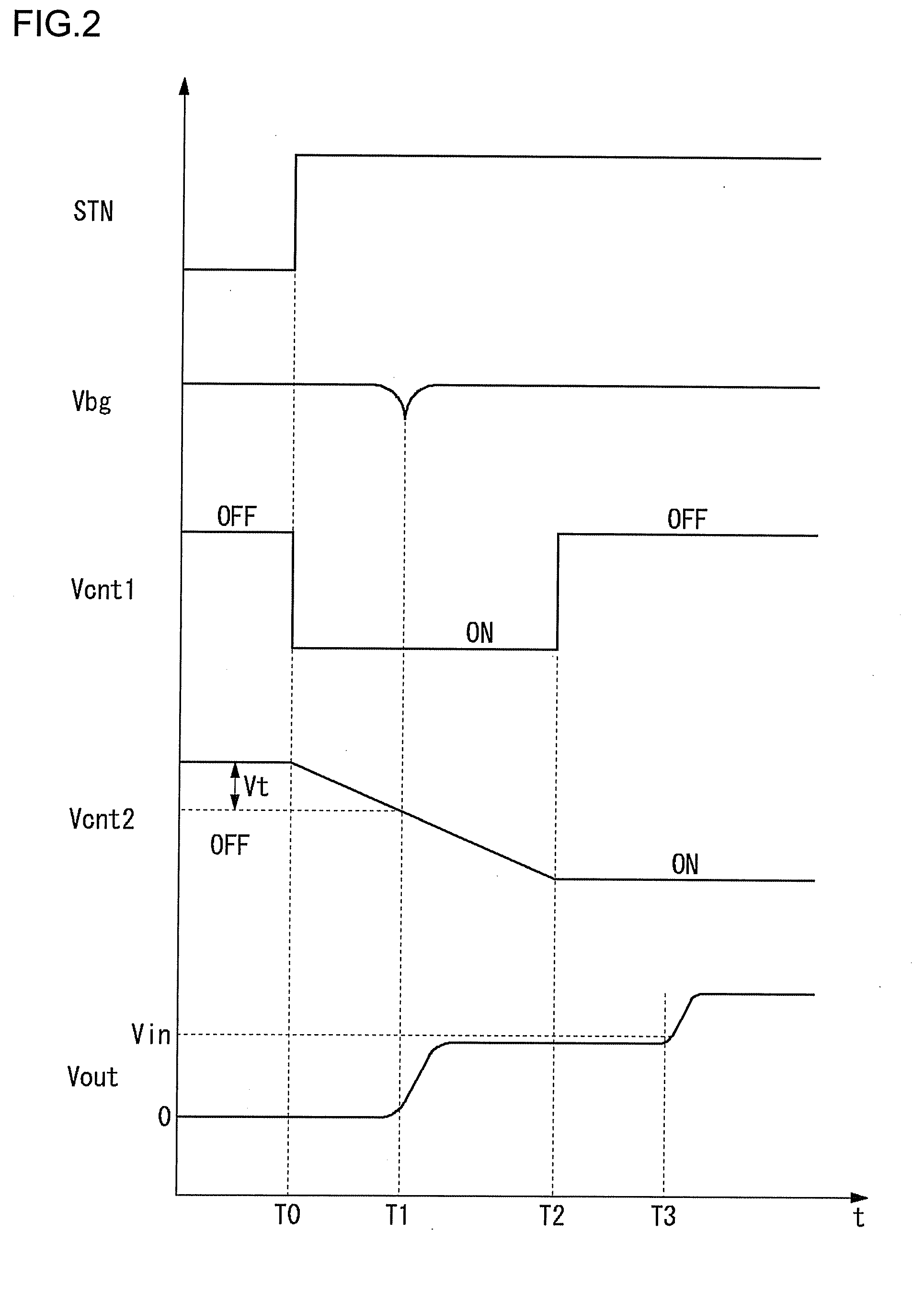Step-up/down switching regulator
- Summary
- Abstract
- Description
- Claims
- Application Information
AI Technical Summary
Benefits of technology
Problems solved by technology
Method used
Image
Examples
first embodiment
[0042]A first embodiment according to the present invention relates to a step-up switching regulator of a synchronous rectifying system. FIG. 1 is a circuit diagram showing a configuration of a step-up switching regulator 200 according to the first embodiment. The step-up switching regulator 200 is a switching regulator of the synchronous rectifying system including a control circuit 100, an inductor L1, and an output capacitor Co.
[0043]An input voltage Vin is applied to an input terminal 202. The step-up switching regulator 200 according to the present embodiment steps up the input voltage Vin at a predetermined step-up rate, and outputs an output voltage Vout from an output terminal 204.
[0044]The inductor L1 is connected between a first terminal 102 of the control circuit 100 and the input terminal 202 of the step-up switching regulator 200. The input voltage Vin is supplied to the first terminal 102 via the inductor L1. The output capacitor Co is connected between the second term...
second embodiment
[0059]A second embodiment relates to a step-down switching regulator 210 of a synchronous rectifying system. FIG. 3 is a circuit diagram showing a configuration of the step-down switching regulator 210 according to the second embodiment. The step-down switching regulator 210 is a switching regulator of the synchronous rectifying system including a control circuit 110, an inductor L1, and an output capacitor Co. In the same drawing, the same reference numerals are given to those identical or equivalent to constitutional elements in FIG. 1; and their description will be arbitrarily omitted.
[0060]An input voltage Vin is applied to an input terminal 212. The step-down switching regulator 210 according to the present embodiment steps down the input voltage Vin, and outputs an output voltage Vout from an output terminal 214. The inductor L1 is connected between a first terminal 112 of the control circuit 110 and the output terminal 214 of the step-down switching regulator 210. The output ...
third embodiment
[0074]The control circuit 100 shown in FIG. 1 and the control circuit 110 shown in FIG. 3 are equivalent in circuit configuration; and arrangement of the externally provided inductor L1 and output capacitor Co and appearing positions of the input voltage Vin and the output voltage Vout are different. Consequently, in a third embodiment, the control circuit 100 shown in FIG. 1 and the control circuit 110 shown in FIG. 3 are used as a control circuit for a switchable step-up / down switching regulator.
[0075]FIG. 5 is a circuit diagram showing a configuration of a control circuit 120 according to the third embodiment. The control circuit 120 includes a first switching transistor SW5, a second switching transistor SW6, a first transistor M1, a second transistor M2, a driver circuit 10, a switch control unit 12, and a pulse width modulator 14. The first switching transistor SW5 serves as a switching transistor at a step-up mode; and serves as a synchronous rectifier transistor at a step-do...
PUM
 Login to View More
Login to View More Abstract
Description
Claims
Application Information
 Login to View More
Login to View More - R&D
- Intellectual Property
- Life Sciences
- Materials
- Tech Scout
- Unparalleled Data Quality
- Higher Quality Content
- 60% Fewer Hallucinations
Browse by: Latest US Patents, China's latest patents, Technical Efficacy Thesaurus, Application Domain, Technology Topic, Popular Technical Reports.
© 2025 PatSnap. All rights reserved.Legal|Privacy policy|Modern Slavery Act Transparency Statement|Sitemap|About US| Contact US: help@patsnap.com



